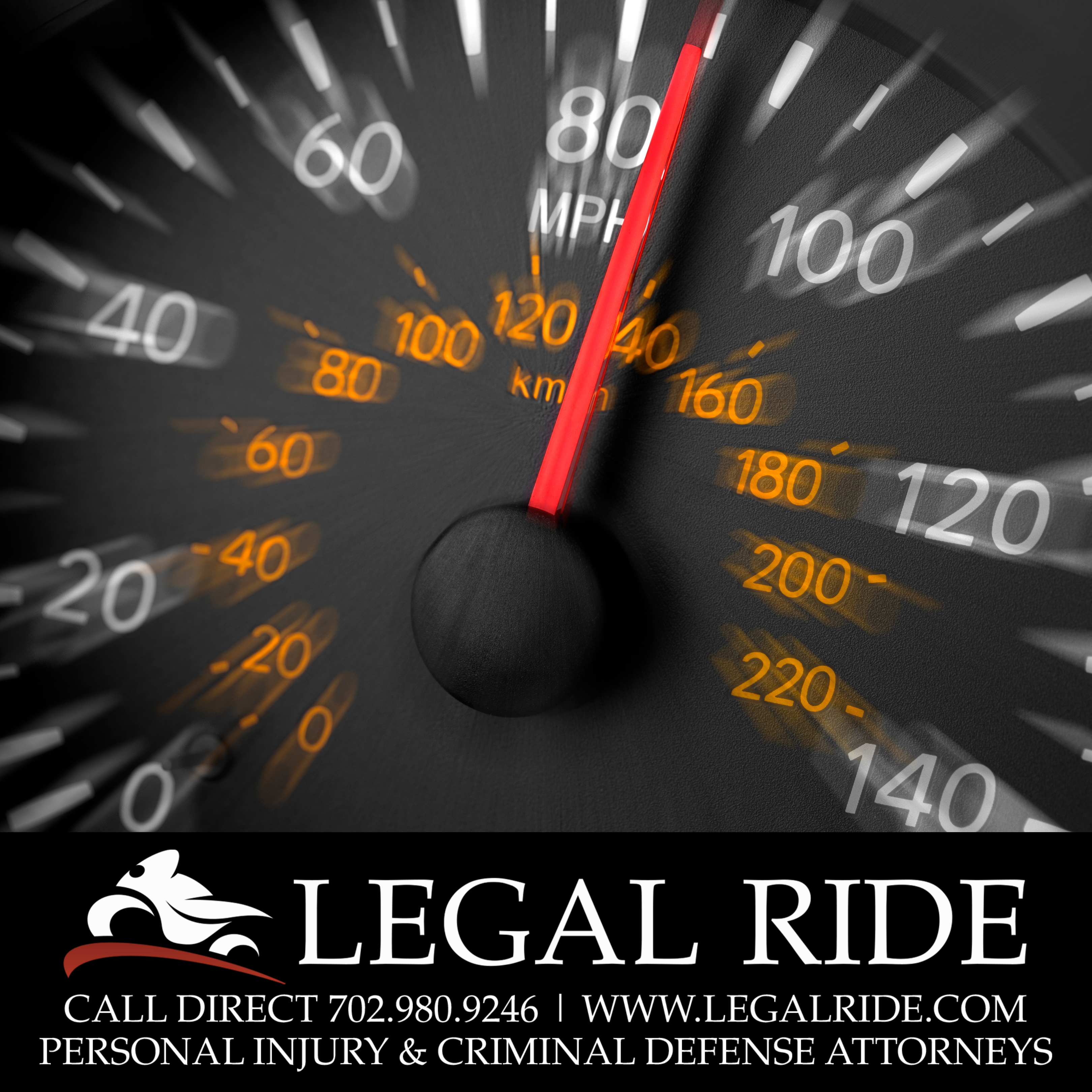May not be popular to say, but speed is a factor in a lot of motorcycle-related accidents. Fortunately, Nevada is a “comparative negligence” State, our version of that law says you can still recover for your injuries so long as your fault is “not greater than” the fault of the other party. So you can recover so long as you are not more than 50% at fault for an accident. The degree of your fault is for a jury to decide, not the cops or the insurance company. There are reasons we can recover even when the rider is more than 50% at fault, but those reasons exceed the scope of this particular post. Far as speed, it comes up in nearly every mc accident case we do, even sometimes when the bike isn’t moving when it got hit (as in, the rider was seen speeding in the area before the accident, so the rider is reckless). Those are things that Legal Ride Personal Injury & Criminal Defense Attorneys Nevada will deal with after an accident. But the point of this post is to hopefully give you some information to process and maybe avoid an accident to start with.
Why does speed matter? Its math. You travel approximately 1.5 feet per second for every mph you are going. So 60 mph is approximately 90 feet per second. 100 mph is approximately 150 feet per second (FPS). When you understand the time frame for “perception and reaction” time, you quickly see how speed affects the outcomes of potential accident scenarios.
We used to be told that an alert, sober rider took about 1.25 to 1.5 seconds to perceive and begin to react to a hazard. At 60 mph, there is about 135′ (a standard lane width in Nevada is 12′). That means you would travel nearly 11 lane widths before your brain would process and begin to react to a car pulling out if you were going 60′. That is simple math.
But a real study was done back east, with instrumented vehicles and cameras trained on the rider’s eyes. Over time, there were numerous accidents from which to draw data. And what we learned is that the real perception and reaction time varies depending on the hazard, whether it was known or not. A surprise hazard, like an animal running out in the road, takes longer, 3 to 5 seconds, to perceive and react to, than a known hazard, like a driving test where you know you have to stop at a certain location, in those known hazard scenarios, we see the 1.50-second perception and reaction time we were all taught by the DMV.
From this, we know two things. First, “keeping your head on a swivel” means, keeping your eyes up and looking and anticipating hazards. If you see a car waiting to make a left, or waiting to pull out, anticipate the driver isn’t going to see you and what your plan is if he pulls out in front of you. Some riders love to continue blasting down the street bc they have the right of way. Some riders love to ride the right-hand lane closest to the driveways. Those actions take away valuable time and distance to respond to dumb driver actions.
When I see a car waiting to go, and there are no cars around me, I roll off the throttle, move to a lane away from the car, and make sure my brakes are covered, just in case. I have spent years working on loading my tires before I ask them to work, a topic we cover in the clinics. Once you perceive and react, it still takes time to get the bike to react and then stop. So imagine, 60 mph, 3 seconds to perceive and react bc you had your head up your ass and didn’t anticipate the obvious car that wanted to jump out in front of you, that’s 270′ before you ever apply the brakes. If you are not covering your brakes, it takes another 4-5/10th of a second to get to the brake lever (45′), and then another 4-7/10th of a second for the brakes to actually start slowing the bike (another 45′ plus), and then on a good day, with good tires, good control, good road surface and no problems, another 125′ to stop the bike.
Luckily we don’t normally need to stop a bike to avoid a hazard, but rather, we need to slow and maneuver the bike. So the other thing we work on in the clinics is changing speed and direction while leaning over. Life-saving skills that are not discussed in MSF courses. So you can do the math, a stop from 60 mph can take 450′ or more if you are making all the classic mistakes. Training and education are the only way to learn about these habits and make changes to cut that stopping distance and learn how to control the bike rather than panic braking, locking the rear brake, and sliding 80′ into the left-turning car. Now that you understand the math, you understand why speed is a factor in so many accidents. It takes far less distance at 45 mph to stop than it does from 60 mph or 100 mph. Not intended to be a criticism of any riders or scenarios, but rather, an educational piece to illuminate the issues and give you the information you need to help save yourself from an accident.
Hit up or Legal Ride Personal Injury & Criminal Defense Attorneys Nevada if you want to attend a clinic, or set up a private clinic for a group of friends or your club. I have been doing these for years and met a lot of you through these clinics. I’d rather meet you this way and help you avoid an accident than meet you at the hospital after an accident!!
